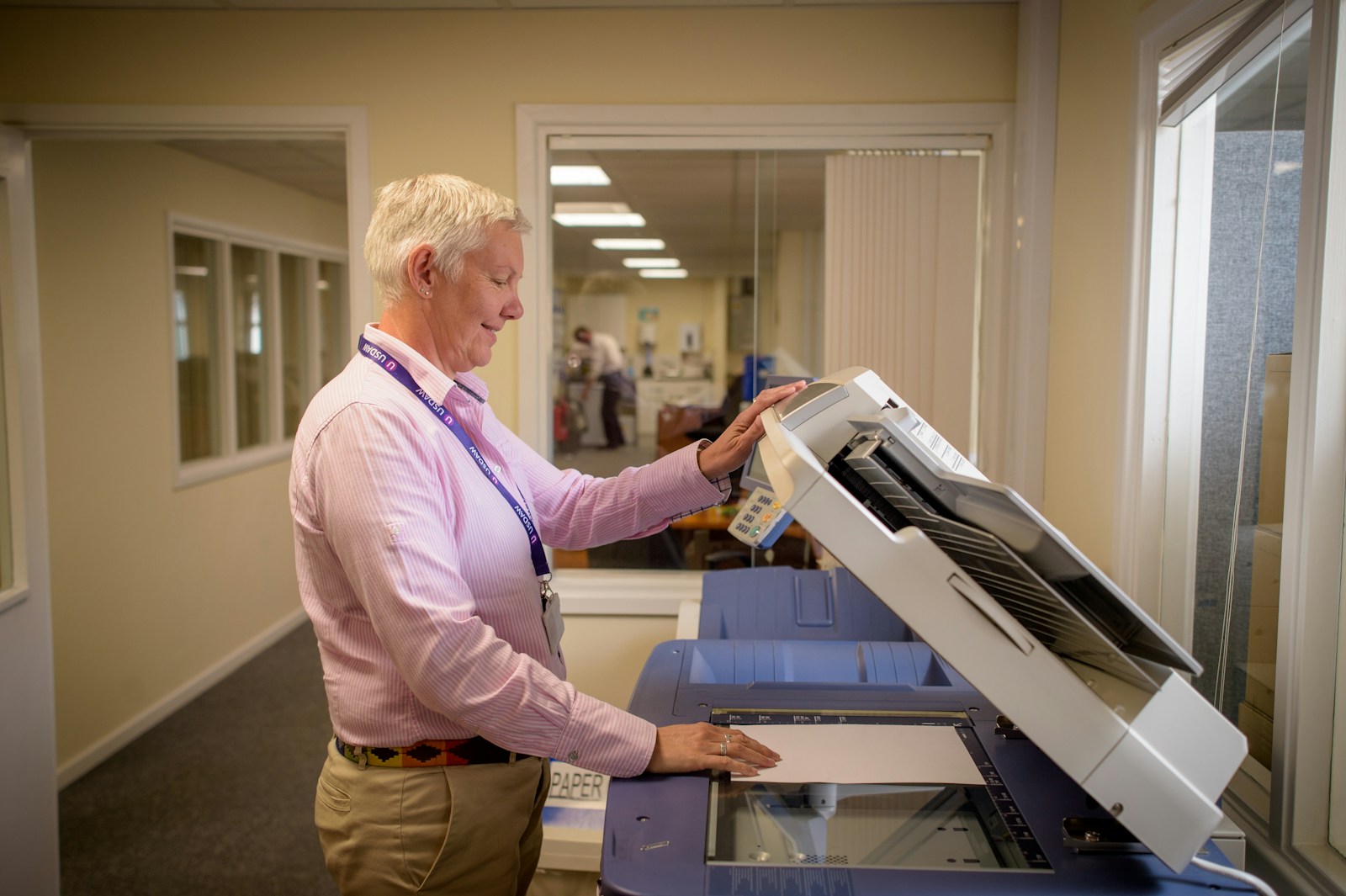In a major shake-up of the global print landscape, Xerox has announced the acquisition of Lexmark for $1.5 billion, a move aimed at consolidating legacy strength, expanding global reach, and adapting to the digital demands of the modern workplace. The deal, unveiled in late December 2024, marks a return of Lexmark to U.S. ownership after years under Chinese private equity firms and signals Xerox’s intent to reassert itself as a global leader in print and services.
Why This Deal Matters
This acquisition isn’t just a financial transaction—it’s a strategic reset. The printing industry has been under pressure for years from digitization, declining office print volumes, and remote work trends. By bringing Lexmark into its fold, Xerox is doubling down on what it sees as the future of the business: managed print services (MPS), software integration, workflow automation, and a more resilient global manufacturing footprint.
Lexmark’s strength in A4 color printing, imaging software, and embedded solutions complements Xerox’s enterprise-grade multifunction devices and growing services portfolio. Together, they now serve over 200,000 customers across 170 countries, forming one of the most extensive customer bases in the print technology world.
Strategic Expansion Beyond North America
While Xerox is a household name in North America, Lexmark gives it a serious foothold in Asia-Pacific and Latin American markets, where Lexmark has established operations and deep distribution channels. This could be crucial as growth in these regions increasingly offsets stagnation in Western print markets.
Lexmark also brings manufacturing assets back into the Xerox orbit—critical in a world where supply chain resilience is no longer optional. This vertical integration could help reduce costs, speed up product development, and ensure better control over quality.
Financial Upside and Cost Discipline
Xerox expects the deal to deliver over $200 million in annual cost synergies within two years, citing overlap in corporate functions, procurement, and back-office operations. The acquisition is forecasted to be immediately accretive to earnings and free cash flow. However, it comes at a cost—Xerox is cutting its dividend in half, from $1.00 to $0.50 per share in Q1 2025, to help finance the acquisition and invest in integration efforts.
Leadership changes are already underway. Two Lexmark executives have joined the Xerox Executive Committee, and Kim Kleps was appointed as the new Chief People Officer, signaling a blended management approach rather than a full absorption.
Repositioning for a Hybrid Workplace
Both companies are pushing aggressively into services and software. The merged entity will lean into:
- Managed Print Services (MPS)
- Cloud-based document management
- Workflow and process automation
- IoT-based predictive maintenance
This realignment fits into a broader trend where enterprise clients aren’t just buying printers—they’re seeking comprehensive workplace solutions that reduce cost, automate mundane tasks, and integrate with hybrid work environments. In that sense, this isn’t just a hardware play—it’s a bet on a service-first future.
What This Means for the Industry
The Xerox–Lexmark deal could be the catalyst for further consolidation in the sector. Like the Ricoh–Toshiba or Fujifilm–Konica Minolta partnerships, this merger is part of a broader wave of alliances aimed at navigating shrinking hardware margins, changing customer expectations, and disruptive technology shifts.
Expect rivals like HP, Canon, and Epson to closely monitor how this deal pans out—and potentially respond with strategic moves of their own. Analysts suggest this deal may also pressure smaller independent MPS providers who will struggle to compete with the scale and service breadth now consolidated under Xerox.
Quick Deal Snapshot
| Feature | Details |
|---|---|
| Deal Value | $1.5 billion (inclusive of debt) |
| Announced | December 23, 2024 |
| Closing Target | Second half of 2025 (pending regulatory approval) |
| Strategic Goals | Scale, global expansion, A4 color dominance, service integration |
| Financial Moves | $200M cost synergy target, dividend halved, reduced leverage |
| Leadership | Lexmark execs integrated into Xerox leadership team |
Outlook: Consolidation with Purpose
As digital transformation continues to rewrite the rules of workplace technology, Xerox’s acquisition of Lexmark is a calculated gamble to stay ahead of the curve. It gives Xerox the scale, tools, and global reach needed to not only survive the print industry’s challenges but potentially reshape its future.
If successful, this merger could redefine what a print technology company looks like in the 2030s—leaner, smarter, and deeply integrated into enterprise workflows. The real test will be execution and how well Xerox can blend these two legacies into a nimble, forward-thinking powerhouse.
Key Takeaways
- With $1.5 billion on the table, Xerox and Lexmark are pooling their tech and services to become a more formidable competitor.
- Xerox is set to boost its manufacturing muscle and global footprint, especially in Asia and Latin America.
- Customers should see a wider range of managed print solutions from this new, bigger Xerox-Lexmark combo.
Overview of the Xerox Acquisition of Lexmark
This deal is a whopper—two heavyweights in print, now under one roof. The idea? Build a bigger global presence in print and managed services, and maybe get a leg up on the competition. Xerox aims to strengthen its core print portfolio and tap into Lexmark’s expertise where it counts.
Key Terms and Financial Details
So, the price tag: $1.5 billion. That’s what it took for Xerox to bring Lexmark into the fold. The goal is to blend Xerox’s digital and print services with Lexmark’s imaging gear to create a more well-rounded offering.
Financial folks are quick to point out that Lexmark’s recent cost-cutting played a role in the valuation. Xerox’s Investor Relations notes that the adjusted EBITDA reflects some belt-tightening Lexmark did in 2023.
Supposedly, the deal will create a lot of efficiencies—shared R&D, streamlined production, and so on. Whether it’ll be enough to thrive in this tough market? Maybe, maybe not, but it’s a bold swing.
Background of Xerox and Lexmark
Xerox is practically a household name in document solutions. Since 1906, it’s gone from making copiers to offering all sorts of document management and digital services.
Lexmark spun out of IBM’s printer division in 1991 and carved out a niche in A4 devices and OEM manufacturing. They’ve always been about building efficient, feature-packed printers for businesses big and small.
Both companies have felt the squeeze as the print world goes digital. Xerox has been leaning into digital services, while Lexmark’s been trying to innovate on the imaging side and tighten up operations to stay in the game.
Timeline of the Acquisition
Talks kicked off in late 2024, and by early 2025, rumors were swirling about another big consolidation in print. The official word came out in April 2025—Xerox was buying Lexmark. The business press had a field day, dissecting what it all might mean.
Now it’s down to regulatory hoops and getting the two companies to play nice together. They’re aiming to close the deal in Q3 2025, assuming all the standard approvals go through. Integration teams from both sides are already trying to map out how this will all work, so ideally, customers won’t notice too much disruption.
Strategic Implications for the Printing Industry
A $1.5 billion buyout like this doesn’t just make headlines—it shakes up the whole industry. Suddenly, the landscape looks a lot different, with new possibilities for tech integration and a reshuffling of who’s on top.
Market Share and Competitive Positioning
This new Xerox-Lexmark hybrid is a much bigger fish, and it’s gunning for giants like HP and Canon. Lexmark’s A4 dominance and Xerox’s strength in A3 gear mean they now cover a huge swath of the market.
Fewer big players means more pressure on the little guys. The merged company can push prices down (or up, depending on where you sit) thanks to economies of scale.
One thing’s for sure: Xerox is now a bigger deal in places where Lexmark had more reach. That kind of global spread helps cushion the blow if one region takes a hit.
Enterprise buyers aren’t going to have as many choices, which could make price negotiations trickier. On the flip side, the combined company might actually offer better, more complete solutions for end-to-end document management.
Impact on Product Portfolios
Suddenly, this company has one of the deepest product benches out there. Xerox picks up Lexmark’s A4 and laser printer know-how, plugging some gaps in its own lineup.
Lexmark’s OEM manufacturing dovetails nicely with Xerox’s focus on services. Together, they can cover everything from building the machines to keeping them running.
The expanded range now hits:
- Enterprise: Heavy-duty multifunction printers
- SMB: Affordable document solutions
- Home/Small Office: Personal printers
Of course, there’s bound to be some overlap. Expect to see some product lines trimmed or merged, which could let them put more energy (and money) into the stuff that really matters.
Integration of Technologies and Services
Combining Xerox’s digital platform with Lexmark’s imaging tech could lead to smarter document workflows, especially for businesses juggling all kinds of devices.
Both companies have put a lot into cloud features and mobile printing. Working together, they might just speed up innovation and make things easier (and less glitchy) for users.
Xerox’s managed print services get a boost from Lexmark’s analytics, so maybe we’ll see better usage stats and predictive maintenance—less downtime, in theory.
Security’s a big deal too. Merging the best features from both could help lock down networks, which is more important than ever.
But let’s not sugarcoat it: integrating different software and platforms is a pain. Success will depend on whether they can actually make everything play nicely together without leaving customers in the lurch.
Potential Effects on Customers and Partners
A deal this size is bound to send ripples through the whole ecosystem. If you use Xerox or Lexmark gear, or sell it, you’re probably wondering what’s about to change.
Changes to Pricing and Support
Don’t be surprised if pricing gets shuffled as Xerox tries to streamline its new, bigger lineup. For now, Lexmark device support will stick around, but over time, expect a shift to more unified systems. Some analysts think big enterprise clients might actually get better prices, thanks to the new scale.
For SMBs, the merger could open up access to beefier service packages that used to be reserved for the big fish. But, let’s be real, in places where this new company is the only game in town, prices could creep up.
Support contracts are probably on the table for review, so watch for possible tweaks to:
- Response times
- Tech support hours
- Warranty terms
- Parts and supplies availability
Influence on Supply Chain Dynamics
This acquisition is going to shake up supply chains for both customers and resellers. Dealers who handled both brands might see some product lines merged or dropped. On the bright side, combining manufacturing could mean steadier product availability—something the industry’s struggled with since COVID.
Distribution partners will likely have to get used to new channel programs as Xerox brings Lexmark’s network into the fold. Smaller partners might find themselves squeezed out if focus shifts to bigger distributors.
For customers, more stable supply chains could mean fewer headaches getting toner or replacement parts. And the new company’s buying power should help buffer against future shortages.
Opportunities for Innovation
On the upside, this merger could kick innovation into a higher gear, leading to better products and services. Lexmark’s A4 strengths plus Xerox’s A3 expertise? That could mean more complete office solutions.
We might see faster rollout of:
- Better cloud integration for print management
- Stronger security features (and who doesn’t want that now?)
- Greener printing options as the combined R&D teams chase sustainability
Managed print customers could get their hands on smarter analytics and reporting tools, blending the best of both companies. And maybe—just maybe—small businesses will finally get access to features that used to be reserved for the Fortune 500 crowd.
Pooling their patents and R&D could also speed up work on things like 3D printing and automated document workflows.
Frequently Asked Questions
Xerox’s $1.5 billion buyout of Lexmark is a pretty big shakeup in the printing industry, so naturally, people have questions—about strategy, products, and what it means for the market.
What are the strategic benefits of Xerox’s acquisition of Lexmark?
In short, it’s a marriage of strengths. Xerox gets Lexmark’s A4 device know-how and OEM manufacturing, which fills in some gaps and makes the combined company more competitive.
This should boost Xerox’s market reach and help them put together stronger offerings. The deal is expected to generate solid cost savings as the two companies combine forces.
Lexmark’s manufacturing setup is a nice fit for Xerox, possibly making production smoother and cheaper.
How will Lexmark’s integration impact Xerox’s current product range?
Bringing Lexmark into the fold is likely to beef up Xerox’s lineup with A4 devices and new tech. Customers can expect to see more feature-rich solutions that blend the best of both companies.
Xerox will probably use Lexmark’s OEM skills to build better, more efficient printers. That could mean new lines that fit today’s digital-first workplaces.
Of course, there’s bound to be overlap, so expect some products to be combined or phased out.
What are the implications of the acquisition on the existing customer base of both companies?
Customers should see a broader set of products and services—hopefully the best of both worlds. Support for current devices isn’t going anywhere (at least for now) while things transition.
Enterprise clients might notice improved service, as the two companies merge their support operations. The combined company could offer more complete solutions for different office setups.
Some product lines may eventually get trimmed, but Xerox will want to keep Lexmark’s loyal customers happy, so support for popular devices should stick around.
In what ways could the acquisition of Lexmark by Xerox reshape the printing industry?
This deal creates a stronger rival in print, with a beefed-up presence in both A3 and A4 segments. With more R&D muscle, they could push innovation faster than before.
It might even spark more consolidation, as other companies scramble to keep up. Business customers could see more integrated hardware and software solutions.
All in all, the new company should be better positioned to handle whatever the post-pandemic office throws at them.
How does the acquisition align with Xerox’s overall business strategy?
The Lexmark deal is a strategic leap for Xerox, signaling a push to solidify its core printing business and expand its reach.
At $1.5 billion (including debt and other obligations), it’s a clear sign Xerox is betting on growth through acquisitions, not just slow, organic expansion.
They’re targeting a close in the second half of 2025, giving themselves time to plan carefully and (hopefully) avoid the usual merger headaches.
What potential challenges could arise from the merger process between Xerox and Lexmark?
Bringing together two big companies like Xerox and Lexmark—each with its own distinct corporate culture—is bound to cause some operational headaches. Honestly, trying to blend those different ways of working isn’t simple, and it’s easy to imagine some bumps along the way. Deciding which products to keep or cut could get messy, too, and in the short run, that might throw things off balance more than anyone would like.
Keeping customers on board during all this? That’s no small feat. It’s going to take some real effort to make sure service doesn’t slip through the cracks. The new company will have to be upfront about its plans and product roadmap, or else people might start to worry about what kind of support they’ll get down the road.
And then there’s the whole regulatory side of things. Approvals can drag on, and it wouldn’t be shocking if the deal ends up taking longer to close than the “second half of 2025” target they’ve set. Bureaucracy tends to move at its own pace, right?







